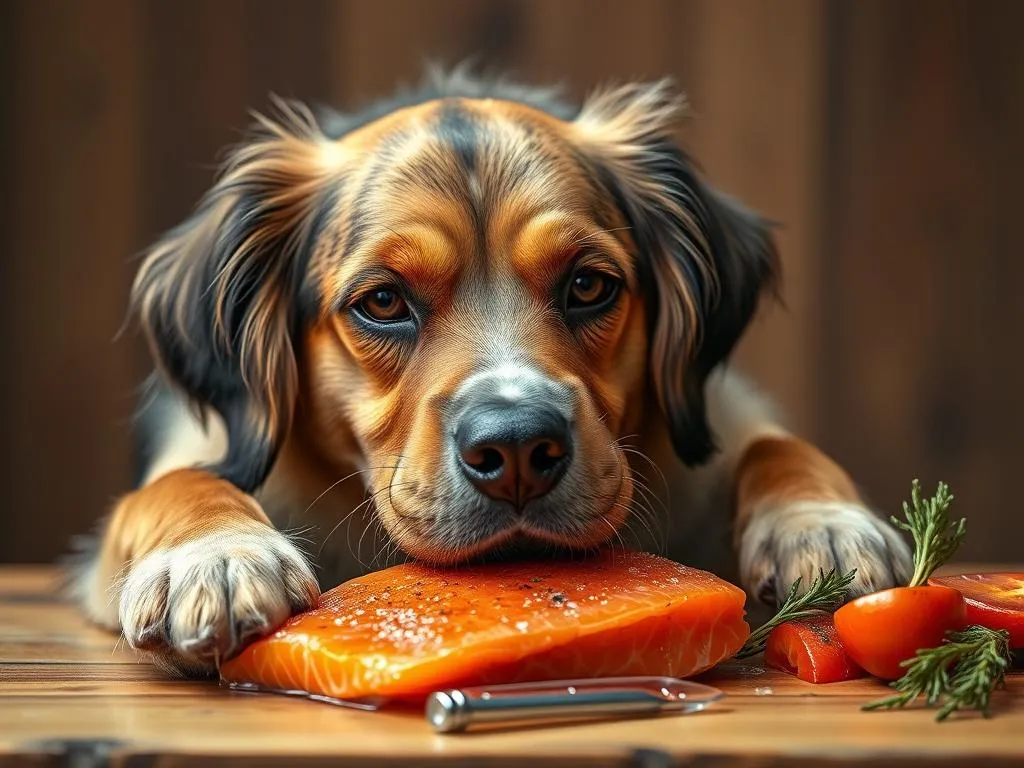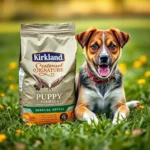
Introduction
When it comes to dog nutrition, understanding what your furry friend can and cannot eat is crucial for their health and well-being. One food that often sparks curiosity among pet owners is salmon. This fatty fish is not only popular among humans but is also touted for its health benefits. However, the primary question remains: can dogs eat salmon? In this post, we will explore this topic in depth, discussing the nutritional benefits of salmon, potential risks, and best practices for incorporating it into your dog’s diet.
Understanding Dog Nutrition
The Basics of Dog Nutrition
To determine if salmon is a suitable food for dogs, it’s essential to understand the basics of dog nutrition. Dogs require a balanced diet that includes:
- Proteins: Vital for growth, maintenance, and repair of tissues.
- Fats: Provide energy and help in the absorption of fat-soluble vitamins.
- Carbohydrates: Offer a source of energy and support digestive health.
- Vitamins: Necessary for various biochemical functions.
- Minerals: Important for bone health, nerve function, and metabolic processes.
Each nutrient plays a specific role in a dog’s health, and ensuring a balanced intake is key to keeping your canine companion thriving.
Common Dog Dietary Needs
Just like humans, dogs have different dietary needs throughout their lives.
- Puppies: Require higher protein and calorie content to support rapid growth.
- Adults: Need a balanced diet to maintain optimal health and energy levels.
- Seniors: May benefit from a diet lower in calories but higher in fiber to support digestion and maintain a healthy weight.
Additionally, some breeds are predisposed to certain health conditions, and their dietary needs may vary accordingly. Always consult with your veterinarian for tailored dietary advice.
Salmon as a Dog Food Option
Nutritional Profile of Salmon
Salmon is rich in nutrients that can be beneficial to dogs. Here’s a breakdown of its nutritional components:
- Omega-3 Fatty Acids: Supports skin and coat health, reduces inflammation, and promotes heart health.
- Proteins: High-quality protein source that aids in muscle development and maintenance.
- Vitamins: Contains essential vitamins such as B vitamins (B12, niacin) and vitamin D.
- Minerals: An excellent source of selenium, potassium, and phosphorus.
When compared to other common dog foods, salmon stands out due to its fatty acid content, making it an appealing option for enhancing a dog’s diet.
Benefits of Feeding Salmon to Dogs
Feeding salmon can offer several health benefits for dogs:
- Skin and Coat Health: The omega-3 fatty acids found in salmon can help alleviate dry skin and promote a shiny coat.
- Anti-Inflammatory Properties: Omega-3s may reduce inflammation, which is particularly beneficial for dogs with arthritis or other inflammatory conditions.
- Heart Health: Salmon can help support cardiovascular health, thanks to its healthy fat content.
- Overall Well-Being: Incorporating salmon can contribute to a balanced diet, enhancing overall vitality and energy levels.
Safety Considerations
Risks of Feeding Salmon
While salmon can be a nutritious addition to your dog’s diet, certain risks need to be considered:
- Raw vs. Cooked Salmon: Raw salmon can contain harmful bacteria and parasites. Cooking salmon kills these pathogens, making it safer for dogs.
- Salmon Poisoning Disease: This is a serious condition that can occur if dogs consume raw salmon infected with a parasite. Symptoms include vomiting, diarrhea, and lethargy.
Recommended Serving Guidelines
When introducing salmon to your dog’s diet, portion size is important:
- For small dogs, 1-2 ounces of cooked salmon is sufficient.
- Medium dogs can handle 3-4 ounces.
- Large dogs may safely enjoy 5-6 ounces.
It’s generally best to treat salmon as an occasional addition to their diet rather than a daily staple, ensuring it’s balanced with other nutrients.
How to Prepare Salmon for Dogs
Cooking Methods
Preparing salmon for your dog requires careful attention to cooking methods:
- Baking: A simple and healthy method. Bake salmon at 350°F for about 15-20 minutes.
- Grilling: Grill without using marinades or spices to enhance flavor without adding harmful ingredients.
- Poaching: Cook salmon in water until fully cooked; this retains moisture without any added fats.
Avoid using salt, spices, oils, or other additives that can be harmful to dogs.
Serving Suggestions
There are numerous ways to include salmon in your dog’s diet:
- Mix with Kibble: Shred cooked salmon and mix it with your dog’s regular food for added flavor.
- Homemade Dog Treats: Use salmon in recipes for treats, ensuring they remain healthy and dog-friendly.
- Gradual Introduction: Introduce salmon slowly to avoid digestive upset, starting with small amounts and monitoring your dog’s reaction.
Alternatives to Salmon
Other Fish Options for Dogs
If you’re considering alternatives to salmon, several other fish are safe for canine consumption:
- Sardines: Packed with omega-3s and generally low in mercury.
- Trout: Another fish rich in nutrients, but should be cooked thoroughly.
- Mackerel: High in omega-3s, but ensure it’s boneless.
Each fish has its own set of benefits and risks, so it’s important to research and consult with your veterinarian.
Non-Fish Sources of Omega-3 Fatty Acids
If you prefer to avoid fish entirely, there are other ways to ensure your dog receives omega-3 fatty acids:
- Flaxseed: Ground flaxseed can be added to food for a boost of omega-3s.
- Chia Seeds: These tiny seeds are nutrient-dense and can be easily incorporated into a dog’s diet.
- Certain Oils: Flaxseed oil and fish oil supplements can also provide beneficial omega-3s.
Always consult with a veterinarian before introducing new foods to ensure they fit within your dog’s nutritional needs.
Conclusion
In conclusion, feeding salmon to your dog can be a nutritious option, offering various health benefits. However, it’s crucial to consider the preparation methods, portion sizes, and potential risks involved. Moderation is key, and a balanced diet is essential for maintaining your dog’s health. Before making any significant dietary changes, consulting with a veterinarian is always advisable to ensure your furry friend receives the best care.
FAQs
-
Can all dogs eat salmon? Most dogs can safely eat salmon, but it’s best to consult a veterinarian, particularly for those with specific health concerns.
-
What should I do if my dog eats raw salmon? If your dog consumes raw salmon, monitor for symptoms of salmon poisoning and consult your veterinarian immediately.
-
Are there any dog breeds that should avoid salmon? Some breeds with specific dietary restrictions or health conditions may need to avoid salmon. Always check with your vet.
By understanding the nutritional benefits and risks of salmon and following safe preparation methods, you can make informed decisions about your dog’s diet.









